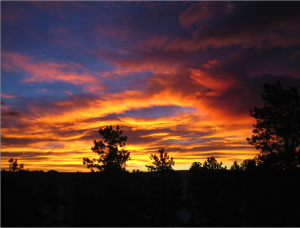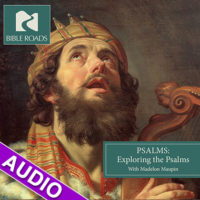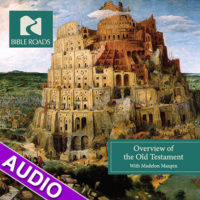Everyone knows what light means – whether it’s the child convinced it’s all that stands between monsters and his bed, or the person appreciating street lamps after leaving the theater. It just makes life better, easier, happier. In fact, light is defined as the energy source for illumination, the very power that makes sight possible.But what does “Light” in the Bible refer to. 
If our fourth grade science lessons taught us anything, it was that the sun supplies light that provides energy to green plants, which in turn provides for other living things in that first big word learned: photosynthesis.
Think of the Bible as a lesson in a kind of spiritual photosynthesis, as God supplies the light man needs, who in turn reflects that needed light out to humanity.
With over 200 references to light in the Old and New Testaments, it’s quickly evident this is a major metaphor running its golden thread through the Bible. My question, when asked to give a talk (“Let there be Light”) for a recent conference on Biblical Nature Metaphors, was if there is a pattern throughout the Scriptures in how light is used?
I was a bit in awe to discover three distinct blueprints concerning light.
The first you might call the light of God or ‘Genesis light’. It’s the illumination at creation on that first day, when formlessness and emptiness give way to form and fullness.
This ‘Genesis light’ appears again on the fourth day of creation when lights separate day from night, with the sun and moon making their Biblical debut. How the ancient world revolved around light – with every primeval culture welcoming full moons turning their face to earth once a month. What a logical opportunity to worship, celebrate, dance and meet. The Jews even organized their original calendars around the moon’s cycles.
The Psalmist wrote about Genesis light as the very presence of God, all the time making it clear that this light was not God itself, as so many of their neighbors believed. The Greeks might have revered Helios, god of the sun, or the Romans their Mithras, but the Hebrews understood God was behind the light, but not the material expression itself. “Let the light of your face shine on us, O Lord,” Ps. 4:6 declared. And “you are clothed with honor and majesty, wrapped in light as with a garment” (Ps 104:1).
One indication of the seriousness and significance of light appears in Exodus when one of the ten plagues is darkness. That it’s lineup–in the ever more grim manifestations of divine displeasure–is number nine, says much. Only the death of the firstborn child is worse than darkness covering the land. And the Exodus account makes clear such darkness, or absence of light, isn’t just experienced visually, but viscerally. ‘Then the Lord said to Moses, “Stretch out your hand toward heaven so that there may be darkness over the land of Egypt, a darkness that can be felt” (Ex. 10:21).
The other two aspects of light (the light of Christ and man’s role as light’s representative) will be discussed in subsequent blogs. You’ll also be able to hear and see the whole program later this summer around July 1, when a streaming video will be released on this and two other talks on Biblical metaphors of nature: “Spiritual Sustainability: A Biblical Perspective”.




Ah, “spiritual photosynthesis,” super concept! Thanks!
Ginny
I’ll be interested to see how you use John 1:4 “In him was life; and the life was the light of men.” Thanks for this!
Madelon, I’m so grateful for this blog on light. Light has been my focus in my study of Christian Science and in art. Thank you so much, and I look forward to more good and inspiring thoughts that you may share.
In the fifties, I was involved in a meeting with one of the early astronauts and Werner von Braun. Space was described as dark purple, so I questioned why there was no obvious sunlight? He explained that there was no atmosphere for its reflection. Quickly I realized the importance of man’s reflection of Truth, Life and Love so that His light can be seen. Thanks for your insight.
Going through some old stuff I found this I wrote long ago…
Love is that light in the forest which allows others to see what they did not see before She was their friend. ~pcl 2012
Actually I couldn’t get the exact point of Light: Three Distinct Biblical Uses here above. As according to my learning I found three types of light a) The Light which separate days and night (2 big lights)
b) Spiritual light (Jesus Christ Himself a big Spiritual light) John 8:12, John 9: 5 and others
c) Intellectual light (2 Cor 4:6)
But I need more than these three or not? I’m not a Bible scholar. Please Suggest me.